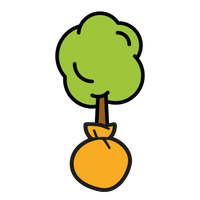When should I plant Laurel Etna hedging?
In general, pot grown hedging can be planted at any time of year, but for the best and fastest results, you should plant around October/November. It is important to remember that rootballed plants can only be planted from November-March, when they're dormant.
How far apart do you plant Laurel Etna plants?
Like most Laurel plants, it is best to plant Laurel Etna around 2-3ft (60-90cm) apart for best establishment. If you are wanting a thick screen quickly, however, it is best to plant at around 1-1.5ft apart. This does of course depend on the size of the plant purchased, as more established root systems will require a lot more room than younger plants.
How to plant Laurel Etna:
Before planting, ensure you give the root ball a very good soak. You can do this by soaking in a large tub of water for a couple of hours or soaking with a hose.
Prepare the planting area by removing any weeds/grass/large rocks, and digging a trench that's twice as wide but the same depth as the root ball.̴Ì?Mix some fresh compost or organic matter into the backfill soil.
Place the plants into the trench, ensuring the base of the stem is at ground level; you may have to adjust the plants to the correct height by placing more soil underneath the root ball.
Then start filling in the gaps with the excess soil, patting down as you go along to ensure the plant is secure. Once complete, water the plant very well and continue to keep it well-watered throughout its first growing season. Please bear in mind that rootballed plants require a lot more water than pot grown - one way to test they're getting enough water is by digging your finger around 3" into the soil, and if it is quite dry, water the plant. If it's still a little damp, then leave it another day before watering.
̴Ì?










